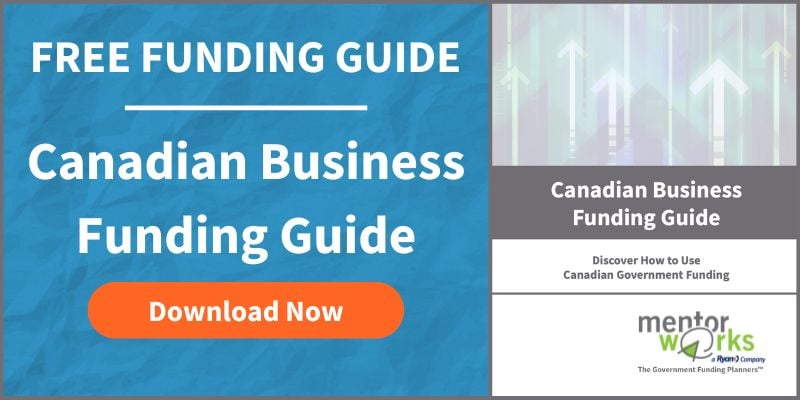What Businesses Should Know About the 2022 Ontario Fall Economic Statement
On November 14, 2022, at 1pm, Minister of Finance Peter Bethlenfalvy tabled the 2022 Ontario Fall Economic Statement (FES) which outlines the current economic state of Canada’s most populous province. The statement focused on providing insight to the province’s current economic and fiscal outlook, as well as offered a progress report for the first time on the plan to build Ontario.
“Together, we have come so far. From attracting investments and good jobs, to training thousands of skilled trades workers and helping keep costs down for families, we have made significant progress. As we navigate these uncertain economic times, our government is enhancing its plan through new targeted measures that support families, seniors and small businesses.”
Minister of Finance Peter Bethlenfalvy
Ontario’s FES arrives the week following the Federal Government’s FES, which readers can learn about in our Review of Canada’s Federal 2022 Fall Economic Statement. Based on current projections, the Ontario government will have a $12.9 billion deficit in 2022–23, an $8.1 billion deficit in 2023–24, and a $0.7 billion deficit in 2024–25; this represents a cumulative improvement of $18.1 billion in the deficit outlook and a cumulative reduction of $26.1 billion in borrowing requirements versus 2022 budget projections.
“We are in a time of elevated inflation that is straining household budgets by driving up prices on everyday goods and services. But I am confident in the resilience of Ontario’s economy, its workers and its people. And I remain confident in our government’s plan to maintain our fiscal flexibility, so we can provide targeted support to people and businesses today, while building for the future.”
Minister of Finance Peter Bethlenfalvy
This article will provide an overview of the 2022 Ontario Fall Economic Statement and any new developments in government funding programs that Canadians and Canadian businesses should be aware of.
Moreover, to see a comprehensive review of significant impacts the OFES will have on tax initiatives and policies, please visit Ryan LLC’s 2022 OFES Tax Review.
New Ontario Economic Investments
Investing in Ontario’s Workforce
- $250 million over five years, starting in 2023–24, towards Employment and Social Development Canada so Canadian workers have the support they need in this dynamic economy;
- Adding $40 million in 2022–23 to the latest round of funding for the Skills Development Fund, which has already helped over 393,000 people take their careers to the next level;
- Changes to the Ontario Disability Support Program (ODSP) that will allow individuals with disabilities to keep more of their income by raising the monthly earnings exemption from $200 to $1,000. Approximately 25,000 individuals currently in the workforce will be able to retain more of their earnings, and this will encourage another 25,000 to do the same; and
- Beginning in 2023–24, investing $4.8 million over two years to increase the number of secondary school students entering skilled trades or early childhood education careers.
Investing in the Critical Mineral Sector
With the following investments, Ontario is making a significant commitment to the crucial mineral sector:
- Support of close to $1 billion for critical legacy infrastructure such as all-season roads to the Ring of Fire;
- Investing $12 million in the Ontario Junior Exploration Program (OJEP) to support junior exploration companies seeking mineral deposits for another two years;
- In addition to precious metals projects, a Critical Minerals Stream for the OJEP will receive $4 million each year over the next three years; and
- Contributing $5 million to the Critical Minerals Innovation Fund to support organizations focused on developing new technologies and attracting private sector investment in critical mineral extraction and processing.
Investing in Ontario Steel
Ontario is contributing up to $500 million towards ArcelorMittal Dofasco’s $1.8 billion investment project in Hamilton to replace coal-fed coke ovens and blast furnaces with new hydrogen-ready direct reduced iron fed electric arc furnaces (DRI-EAF). This project will support 4,600 people and will be completed by 2028, as well as reduce greenhouse gas emissions by about three million tonnes annually.
Investing in HealthCare and Medical Supplies
- About 2,500 eligible postsecondary students who enroll in high priority programs, such as nursing, in high priority communities will be eligible for the Learn and Stay Grant starting in spring 2023;
- By 2025–26, the number of nurses in the system will increase by 2,000 as a result of $145.5 million in funding for 1,500 additional seats in nursing education;
- Approximately $400,000 in one-time funding for the training of 38 additional nurse practitioners starting in 2022–23;
- Undergraduate and postgraduate medical education and training in Ontario will receive $42.5 million over two years beginning in 2023–24;
- In the health care sector, 61 companies and 11 organizations will receive $78 million through the Ontario Together Fund to supply emergency products and to build resilience; and
- A $23.3 million investment will support 3M Canada’s $70 million investment in expanding its Brockville, Ontario, facility to produce N95 respirators made in the province.
Investing in Innovation and Technology
- A commitment of $107 million in new critical technology initiatives that will enable technology access and commercialization; and
- The new life sciences strategy, “Taking Life Sciences to the Next Level”, hopes to make Ontario a global hub for biomanufacturing and life sciences by investing $15 million over three years in a new Life Sciences Innovation Program. The program will help develop and scale innovative technologies in the life sciences sector.
Investing in Infrastructure
Through key corridors such as the QEW and Highway 7, $25.1 billion will be invested over the next 10 years to connect communities, tackle gridlock, and move goods and people across the province.
Support for Small Businesses and Families
- By extending the phase-out of the small business tax rate for another three years, approximately 5,500 Ontario small businesses will receive $185 million in income tax relief;
- Small business property tax reductions are automatically matched across all municipalities that adopt the small business subclass;
- Starting in July 2023, the maximum monthly amount for Assistance for Children with Severe Disabilities will be adjusted for inflation annually; and
- Incentives are proposed to encourage more on-location filming in communities across Ontario by expanding the eligible expenditures for the Ontario Production Services Tax Credit to include location fees. This will help attract domestic and foreign productions to the province.
Stay Up to Date on All Government Funding News
Every day, new and exciting government funding grants, loans, tax incentives, and more are released to support Canadian businesses. However, many of these programs unfortunately go unseen by businesses that are eligible for funding until it’s too late.
Mentor Works, Canada’s top government funding application writers, keep thousands of Canadian businesses up to date with daily news articles, weekly newsletter updates, and frequent industry-leading webinars; all of which are free. Make sure to sign up for one or all of these free services to make sure you never miss a funding opportunity again!


